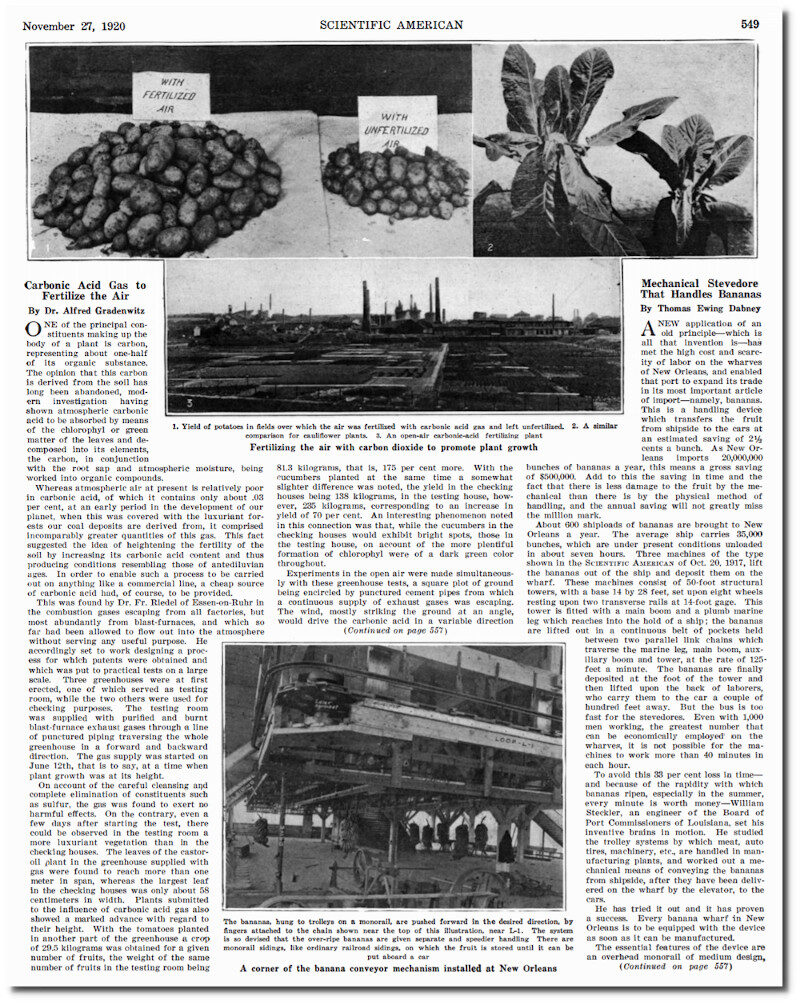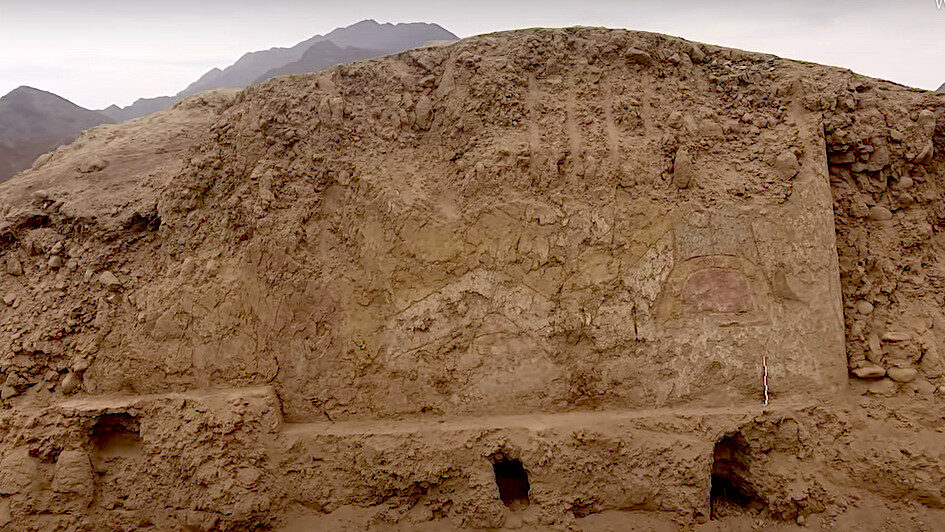OF THE
TIMES
Fertilizing the air with carbon dioxide to promote plant growth
ONE of the principal constituents making up the body of a plant is carbon, representing about one-half of its organic substance. The opinion that this carbon is derived from the soil has long been abandoned, modern investigation having shown atmospheric carbonic acid to be absorbed by means of the chlorophyll or green matter of the leaves and decomposed into its elements, the carbon, in conjunction with the root sap and atmospheric moisture, being worked into organic compounds.
Whereas atmospheric air at present is relatively poor in carbonic acid, of which it contains only about .03 per cent, at an early period in the development of our planet, when this was covered with the luxuriant forests our coal deposits are derived from, it comprised incomparably greater quantities of this gas. This fact suggested the idea of heightening the fertility of the soil by increasing its carbonic acid content and thus producing conditions resembling those of antediluvian ages.



Comment: See also: